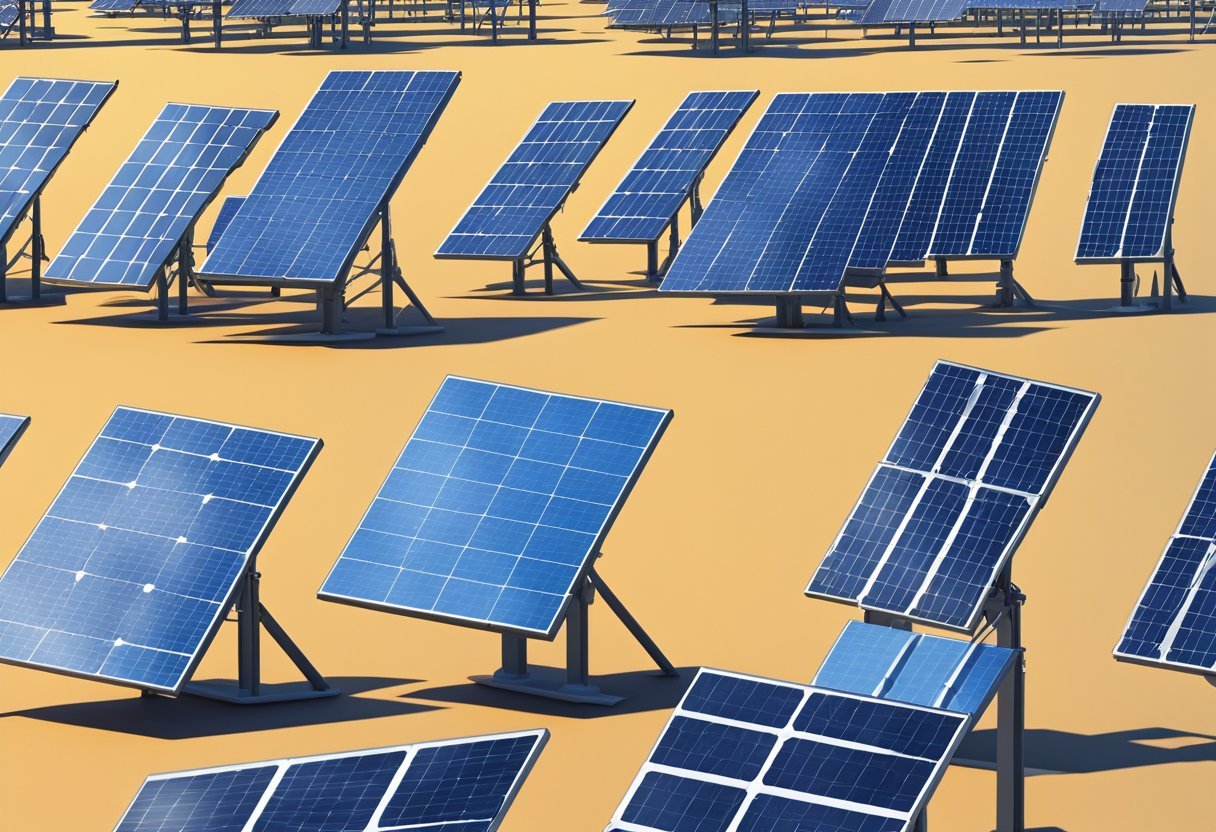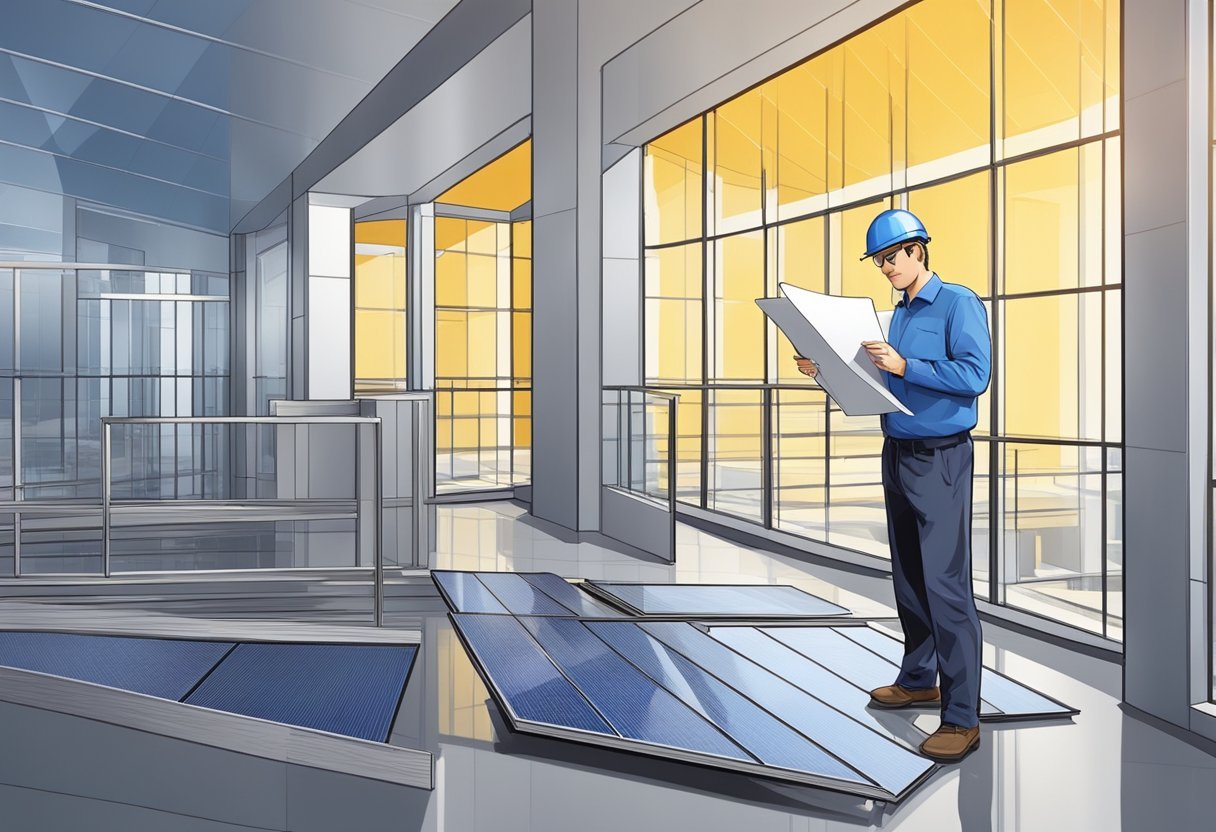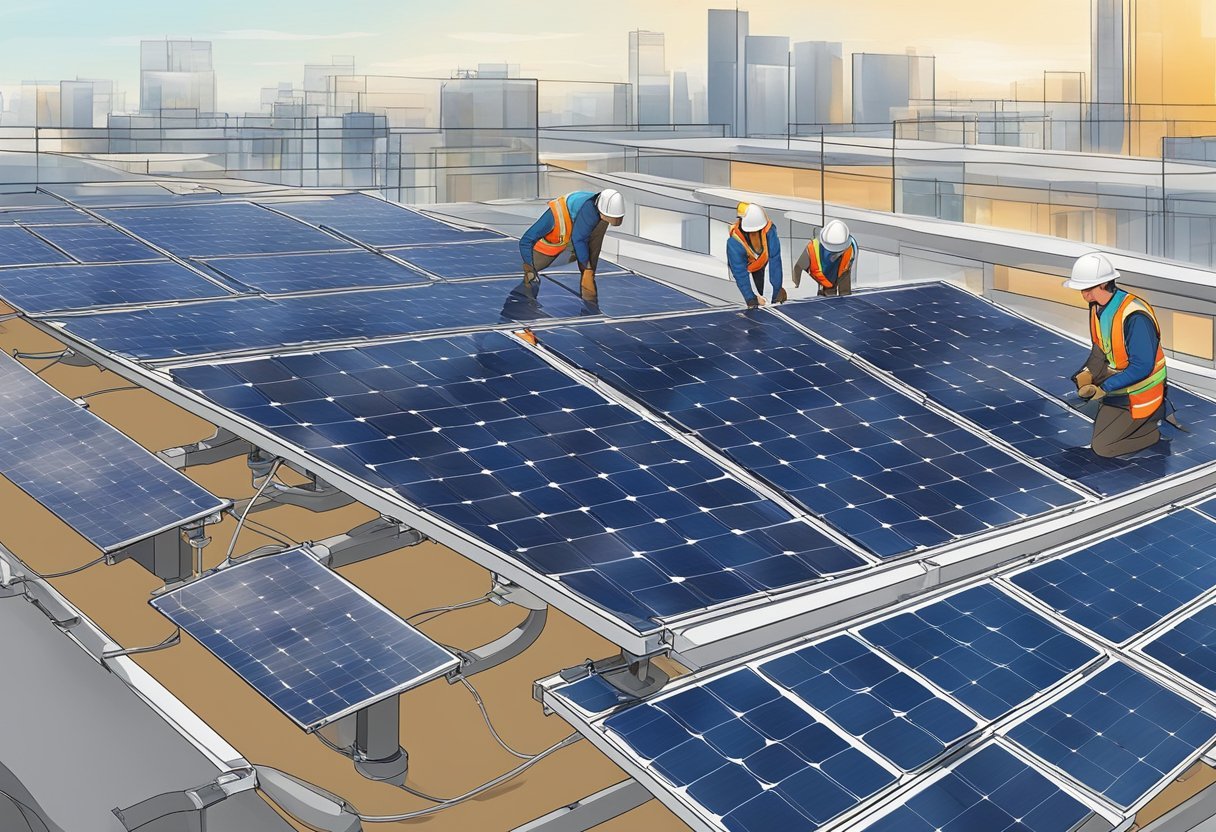The field of solar structural engineering is continuously evolving as the demand for sustainable, clean energy increases rapidly. Solar structural engineer reports play a critical role in facilitating the development of solar projects. These reports evaluate the design, materials, and construction methods employed in solar installations. They provide essential insights into the viability and durability of solar projects in various geographical locations and climates.
(Click here for more details on our solar structural engineering services.)
One of the key aspects addressed in a solar structural engineer report is the analysis of the solar infrastructure, which encompasses the solar panels, supporting structures, and connections to the electrical grid. These reports ensure that the projects adhere to local building codes and safety regulations, while also considering environmental factors, such as wind loads, snow loads, and seismic activity.
As the solar industry continues to expand, the importance of comprehensive solar structural engineer reports cannot be overstated. Such reports not only mitigate potential risks and hazards but also pave the way for innovation and optimization in this burgeoning sector. By providing in-depth knowledge and expertise on solar project infrastructure, these reports contribute significantly to the successful implementation and growth of solar energy systems worldwide.
Roles and Responsibilities
Contact us for a full range of solar permit services
Solar Structural Engineers
Solar structural engineers play a crucial role in the design and implementation of solar energy systems. They are responsible for assessing the structural integrity of buildings and ensuring that solar installations can safely and effectively be mounted on various structures, from residential homes to commercial buildings. These engineers evaluate the building's materials, construction methods, and overall stability to determine the feasibility of solar installations.
Structural engineers also work closely with other design professionals, such as architects, to develop load calculations and devise support systems for solar panels. Their expertise is essential in ensuring the solar system's safe and reliable operation. Additionally, they must stay up-to-date with industry standards and regulations, including building codes and the role of solar panel support structures.
Contractors and Owners
While solar structural engineers are responsible for ensuring the technical elements of a solar installation, contractors and owners also have essential roles and responsibilities. They must work with the design engineer to select the most suitable solar system for their specific needs and budget. This includes evaluating energy consumption at the facility and determining the size of the solar array required to meet those energy needs.
Owners must also ensure their buildings meet any applicable local building codes and work with contractors to procure the necessary permits for the installation. Additionally, owners should invest in routine inspections and maintenance to keep the solar system and support structures in optimal condition.
Contractors are responsible for the actual installation of the solar system, and they must work closely with the structural engineer to ensure the design plans are followed. This may involve coordinating with other construction professionals, such as electricians and roofers, to ensure a seamless installation. Furthermore, contractors must understand and adhere to contractor liability requirements, which vary depending on the project's location.
In summary, solar structural engineers, contractors, and owners all have crucial roles to play in the successful implementation of a solar energy system. Each party must collaborate effectively and fulfill their respective responsibilities to ensure the project's safety, efficiency, and long-term viability while adhering to industry standards and regulations.
Structural Analysis and Design
Weight Assessment
When considering a solar structural engineer report, the weight assessment involves calculating the dead load and live load imposed on the structure by a photovoltaic (PV) system. Dead load comprises the self-weight of the solar panels, mounts, and racking systems. Live load is the additional weight imposed on the structure, such as that from snow, ice, and maintenance activities. These two loads determine the potential load capacity the structure can handle without compromising its integrity.
Load Calculations
Solar structural engineers perform load calculations to determine the overall stability and robustness of the PV system. These calculations are inclusive of dead load from the solar array, live load from environmental factors, and additional load from fixtures. The assessment of load capacity is crucial to ensure that the structure can support the PV system without the risk of structural failure.
Wind and Snow Considerations
Wind and snow loads are vital factors when designing PV systems, as they contribute to the live load. Solar structural engineers use simulations and mathematical models to determine the wind and snow loads on a proposed PV system, taking into account local climate conditions and historical weather data. Engineers use pressure coefficients to calculate wind loading based on factors such as wind speed, building height, and orientation.
Ballast and Racking Systems
An essential aspect of solar structural design is the choice of ballast and racking systems. Ballast systems are non-penetrating, ensuring the structural integrity of the roof remains intact, whereas racking systems attach directly to the structure, increasing load capacity. When structurally analyzing and designing a PV system, solar engineers must choose between these two systems based on factors such as the roof's design, load capacity, and overall stability. They must also ensure that any selected system adheres to local building codes and structural requirements.
In conclusion, structural analysis and design are crucial aspects of a solar structural engineer report. By assessing weight, performing load calculations, and considering environmental factors such as wind and snow, engineers can ensure the safe and effective implementation of PV systems.
Building Code Compliance
Code Requirements Overview
In the field of solar installations, a critical aspect is ensuring compliance with various building code requirements. These requirements ensure the safety, stability, and proper functioning of solar systems integrated with structures. Adhering to building codes is an essential responsibility of solar structural engineers, who must thoroughly analyze and design systems to meet established standards.
Adherence to International Codes
Two primary codes for solar installations are the International Building Code (IBC) and the International Residential Code (IRC). These codes provide guidelines for structural, mechanical, electrical, and plumbing systems, ensuring safe and efficient integration of solar systems in buildings. Solar structural engineers refer to these codes, along with publications from organizations like the American Society of Civil Engineers (ASCE), to provide comprehensive design solutions.
The 2016 edition of the codes - including ASCE 7-16 - consists of updated structural provisions and requirements that specifically address solar systems. It's essential for professionals in the solar industry to stay updated with such revisions to meet compliance and guarantee safety.
Wind and Seismic Design Standards
One significant aspect while designing solar installations is considering the impact of environmental factors. Solar structural engineers must comply with wind design and seismic design standards established by the ASCE 7 and outlined in the IBC and IRC. Adherence to these standards ensures solar systems can withstand wind and seismic loads, reducing potential damages and ensuring the safety of occupants and structures.
Key design considerations for wind and seismic standards include:
Wind speed and exposure
Structural materials and connections
Roof slope and geometry
Seismic site classifications and hazard levels
Foundation design and soil conditions
By following structural building code requirements and adhering to international codes and standards, solar structural engineers can deliver compliant, safe, and efficient solar systems for residential and commercial applications.
Project Planning and Execution
Surveys and Capacity Evaluation
Before initiating a solar structural engineering project, it is crucial to conduct thorough surveys and evaluate the capacity of the existing structure. Performing a site assessment and understanding the existing load capacity helps determine the feasibility of installing solar panels on the roof. This phase involves assessing factors such as available roof space, existing roof load-bearing capacity, and necessary reinforcements required for the PV panel installation.
Rooftop Solar Installation Specifics
Once the initial evaluations are completed, a plan must be created for the installation of PV panels on the roof structure. Important elements to consider include the orientation of the solar panels, the type of mounting system, and the wiring layout. A well-structured plan will ensure that the installation process is smooth and efficient. The following table provides an example of the primary components to be addressed in the installation plan:
| Component | Description |
|---|---|
| Panel Orientation | Optimal angle for maximum solar energy capture |
| Mounting System | The style and materials used to install and secure the panels onto the roof |
| Wiring Layout | Proper routing of electrical cables to minimize potential hazards |
Strengthening and Reinforcement
In cases where the existing roof structure is not designed to support the additional weight and mechanical loads of solar panels, strengthening and reinforcement measures will be necessary. This could involve adding structural support such as beams, columns, or bracing. Carefully executed reinforcement ensures that the building can safely bear the load introduced by the solar panels and any accompanying equipment (inverters, wiring, etc.).
Documentation and Communication
Effective communication and comprehensive documentation play a vital role in a successful solar structural engineering project execution. Documentation should include detailed survey results, capacity evaluation reports, plans for reinforcing, and installation specifications. Throughout the project, key stakeholders should be kept informed of the project progress, challenges, and solutions. Maintaining transparent communication among the project team, the client, and relevant regulatory authorities ensures that everyone is on the same page and reduces the chances of issues arising during the project's implementation.
Risk Management
Detecting and Addressing Design Errors
In the realm of solar structural engineering, identifying and rectifying design errors is crucial. These errors may include inaccuracies in calculating component and cladding loads, incorrect material specifications, or flawed detailing. The implementation of a thorough review process at various stages of design and the involvement of experienced professionals can help in early detection and correction of errors. Additionally, employing advanced modeling and analysis software can enhance the accuracy of designs and reduce the likelihood of errors.
Construction Defects and Liability
Construction defects can lead to structural issues, property damage, and potential liability. Therefore, managing construction risks and minimizing defects during project execution is vital. Some key strategies to mitigate these risks include:
Selection of qualified contractors with relevant experience in solar installations
Proper training and oversight of construction crews
Regular inspections and progress monitoring
Prompt identification and rectification of defects at the earliest stage possible
By implementing these strategies, the project team can effectively address construction defects and limit liability exposure.
Claims and Dispute Resolution
Claims arising from design errors and construction defects can lead to delays, additional costs, and even litigation. To reduce the likelihood of disputes, it is important to have a well-defined process for handling claims, such as:
Documentation: Maintain transparent and comprehensive documentation of the project, including contracts, change orders, meeting minutes, and inspection reports.
Communication: Establish clear channels of communication between all parties involved to address issues promptly and efficiently.
Conflict resolution: Implement proactive conflict resolution mechanisms, such as mediation or dispute review boards, to facilitate early and amicable resolution of disputes.
By adopting these practices, stakeholders can effectively manage claims and reduce the risk of lengthy legal battles that can compromise the success of a solar project.
Quality Assurance
Testing and Validation
In the realm of solar structural engineering, ensuring the reliability and economy of systems is of utmost importance. A crucial aspect of this process is the implementation of proper quality assurance procedures, including testing and validation of components and structures. Forensic engineering plays a significant role in identifying the causes of structural failure, allowing engineers to develop better designs and materials. This retrospective analysis can contribute to more reliable and economical systems in the end.
Laboratory tests are a vital part of the quality assurance process, examining materials and components under controlled conditions. By subjecting solar system components to various stresses and environmental factors, engineers can evaluate their durability and performance over time. Results from these tests can be instrumental in the structural engineering design process, supporting the creation of robust and efficient solar energy systems.
Professional Standards of Practice
Adherence to professional standards of practice is essential for maintaining high-quality solar structural engineering. These standards revolve around best practices, codes, and guidelines that help ensure the construction of reliable and economical solar systems. One of the potential solutions to ensuring quality in solar infrastructure is the development and establishment of a comprehensive quality assurance framework.
Engineers engaged in solar structural design must continuously update their skills and knowledge, staying abreast of the latest technological advancements, regulations, and industry trends. By following these professional standards, engineers can not only improve the quality of their structural designs and materials but also contribute to the entire solar energy industry's sustainable growth.
In summary, quality assurance in solar structural engineering requires a combination of thorough testing and validation, adherence to professional standards, and continuous improvement. These practices, together with the invaluable insights gained from forensic engineering, lead to more reliable, efficient, and safe solar energy systems for a sustainable future.
Innovations in Solar Engineering
Advances in Material Technology
Over the years, there has been significant progress in the field of solar engineering. One area where notable advancements have been made is in material technology. The introduction of more efficient and cost-effective materials in the production of photovoltaic panels has led to an increase in solar power adoption. For instance, the development of perovskite solar cells has resulted in higher efficiency and lower-cost solar panels in comparison to traditional silicon-based panels. This improvement in materials technology has made solar energy a more sustainable and viable option for power generation.
Integration of New Design Techniques
In addition to material advancements, solar engineering has seen the integration of new design techniques that optimize the performance of solar energy systems. An example of this is the implementation of building-integrated photovoltaics (BIPVs), which seamlessly integrate solar panels into the structural components of buildings. BIPVs not only serve a dual purpose of generating power but also act as a part of the building's structural design. This innovative approach not only increases the aesthetic appeal of buildings but also enhances the technical design and functionality.
Future Trends and Sustainability
Looking ahead, solar engineering continues to evolve, promising even more sustainable and efficient solutions for harnessing the sun's energy. Emerging trends, such as energy-storage technologies, are being developed to tackle the intermittency of solar power generation. These technologies will allow solar energy to be stored and used during periods of low sunlight, significantly improving the reliability and practicality of solar energy.
Furthermore, ongoing research in solar engineering, such as the investigation of nanotechnology applications in solar panels, aims to continually enhance the efficiency and affordability of solar power. Emphasis on sustainability and innovation in solar engineering will undoubtedly play a key role in shaping future energy strategies that mitigate climate change and promote a cleaner environment.
Frequently Asked Questions
What are the key components of a solar structural engineering report?
A solar structural engineering report typically includes a detailed analysis of the existing structure, an assessment of the proposed solar panel system, and the impact of the installation on the structural integrity of the building. Key components often consist of loading calculations, structural member sizing, connection details, and recommendations for any required reinforcements.
How can I obtain a sample solar structural engineer report for reference?
Sample solar structural engineering reports may be available from professional engineers, solar installation companies, or online resources, such as industry forums or educational platforms. Be sure to verify the credibility of the source before using it as a reference.
What structural calculations are necessary for the installation of solar panels?
The necessary structural calculations for solar panel installation typically involve determining the additional loads imposed by the panels, such as dead load, live load (snow or wind), and any dynamic loads associated with installation or maintenance. Engineers must also consider factors like the layout, mounting methods, and the compatibility of the existing structure to support the added weight and forces.
How does the addition of solar panels affect roof structure analysis?
Adding solar panels to a roof can alter its structural performance, potentially increasing the overall load or influencing the distribution of stresses within the structure. This necessitates a thorough analysis of the existing roof system to ensure that it can safely withstand the additional loads and resist potential issues such as deflection, fatigue, or instability.
What qualifications are necessary to produce a structural engineer report for solar installations?
A qualified structural engineer, typically holding at least a bachelor's degree in civil or structural engineering, is required to produce a structural engineering report for solar installations. Additionally, the engineer should have experience with solar systems, a thorough understanding of relevant building codes, and be licensed in the jurisdiction where the project is taking place.
Does the installation of solar panels affect the building's structural warranty in any way?
The installation of solar panels may affect the building's structural warranty, depending on the specific warranty terms and conditions. It is essential to consult with the building owner, manufacturer, or contractor to determine if the proposed solar system will affect the warranty and if any additional requirements or approvals are necessary prior to installation.







